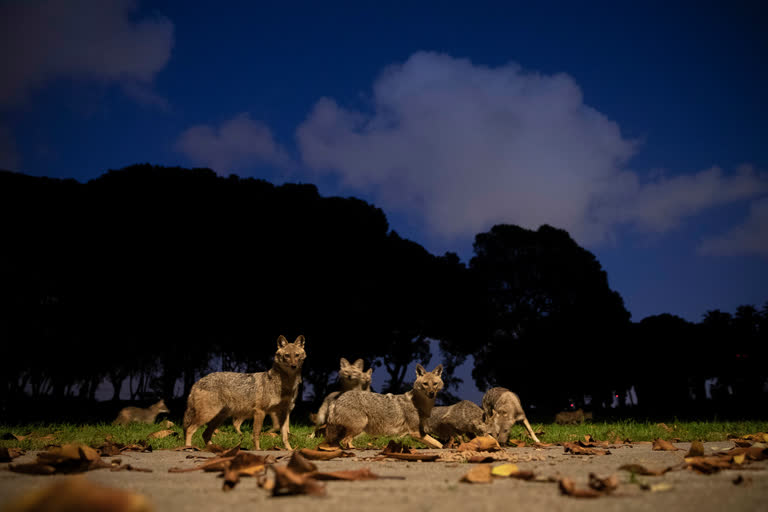Hyderabad:The coronavirus pandemic has been good news for much of the world's wildlife. With people staying at home and travelling less, animals have been spotted in unusual places and air pollution has dropped in some areas.
With people staying at home and travelling less, animals have been spotted in unusual places and air pollution has dropped in some areas. Lockdown measures put in place by the authorities have largely cleared the streets of humans and traffic and nature flourishes instead.
An unplanned grand experiment is changing Earth. In the Welsh town of Llandudno, the goats are ruling the roads.
A wild puma prowls through Santiago in Chile, a coyote stalks the viewing area for San Fransisco's Golden Gate Bridge, a place that is normally packed with tourists.
Read Also:Prague Zoo welcomes new baby elephant
With less human interference and light pollution, sea turtles across the world are daring to lay their eggs on beaches they once avoided.
For the first time in around a decade, Olive Ridley turtles nest off the coast of the Bay of Bengal in India.
It's making scientists hopeful that their breeding season will be a wild success for the endangered creatures.
"It is giving a unique insight into the impacts that we humans have upon the environment in many ways. We are beginning to see wildlife that we are not expecting to be there. We are seeing clear skies. We're seeing views of mountains that only our grandparents told us about. We are seeing a reduction in pollution. It is giving us this quite extraordinary insight into just how much of a mess we humans are making of our beautiful planet," says Stuart Pimm, a noted conservation scientist from Duke University in the US.
Read Also:Egypt washes down Giza Zoo with disinfectant
Smog stopped choking New Delhi, one of the most polluted cities on Earth and India's getting views of sights not seen in decades.
New Delhi's skyline before (top) and now. Nitrogen dioxide pollution in the US northeast is down 30 percent. Rome's air pollution levels are down more than half from a year ago.
"I hope we'll learn the lessons from that. It won't be easy but it will tell us what we could achieve if we put our minds to it," says Pimm.
Researchers say they're eager to explore changes in weeds, insects, rain patterns, noise and light pollution, clouds and even the daily hot and cold temperature spikes. The most obvious change is in the cleaner air.
These maps made available by the Royal Netherlands Meteorological Institute and European Space agency show the average nitrogen dioxide concentrations over Europe in March - April 2019, top, and from March 13 - April 13, 2020 during a lockdown against the COVID-19 coronavirus. NASA and others are noticing dramatic drops in the more traditional air pollutants, such as nitrogen dioxide, smog and tiny particles.
These maps made available by NASA shows the average concentration of nitrogen dioxide in March 2015-19, top, and in March 2020 as people stay home against the COVID-19 coronavirus. The air along the US Interstate 95 corridor from Boston to Washington is the cleanest it's been since 2005, after a severe decline in vehicle traffic.
These maps made available by NASA show concentrations of nitrogen dioxide across China from January 1-20, 2020, before the quarantine against the COVID-19 coronavirus, and February 10-25, during the quarantine. Air pollution over China to has shown improvement since December.
(AP)
